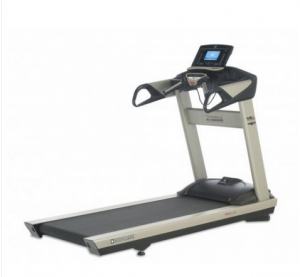Without question, treadmills are integral to a variety of workout routines—be they designed for cardio training, weight loss or rehab. Whatever your reason for wanting a treadmill, at some point in your research you’ll come across horsepower metrics. Here’s some helpful information.
Understanding Treadmill Horsepower Metrics
Put simply, horsepower indicates the rate of power at which a machine completes a task. It’s a definition that means nothing to most people, except in terms of more horsepower being better.
However, in the world of treadmill marketing, horsepower metrics aren’t what they seem. First, just as an ‘A’ test grade tells you nothing about how hard the test-taker worked to achieve that mark, horsepower is an endpoint that tells you nothing about the conditions by which a certain rating was achieved. Second, since there is no ‘governing body’ of treadmill standards, every treadmill manufacturer arrives at its horsepower metrics in vastly different ways.
Looking Past Horsepower
What’s a better way to judge a treadmill motor? First, knowing how many revolutions per minute (RPMs) it took for a treadmill to achieve its horsepower rating is a good place to start. The more RPMs required to achieve a certain horsepower, the less robust the motor—and the quicker it will fail. For example, treadmills sold at big box retailers typically take 5,000 to 6,500 RPMs to achieve a 3 or 4 horsepower rating. But premier brands like TRUE and Cybex take only 3,000 to 4,000 RPMs to achieve the same rating—using less power to do so and lasting longer as a result.
In addition, manufacturers that distribute their treadmills through the big box stores typically test their machines at facilities with up to 30-40 amps per power source—twice what individual electrical outlets in a typical American home can supply. That means whatever horsepower rating that ‘big box’ treadmill has can’t be achieved at home without completely expanding your electrical service.
But premium brands, again like TRUE and Bodyguard, test their machines on 20 amp outlets. That way, their customers know they can achieve exactly the power rating listed without overtaxing their home’s electrical infrastructure. (Plus, that’s why anyone from Gym Source, TRUE or Bodyguard will tell you to have a dedicated 20-amp outlet for your treadmill.)
Still have questions about horsepower ratings? Stop by Gym Source anytime, we’d be happy to discuss it further.

